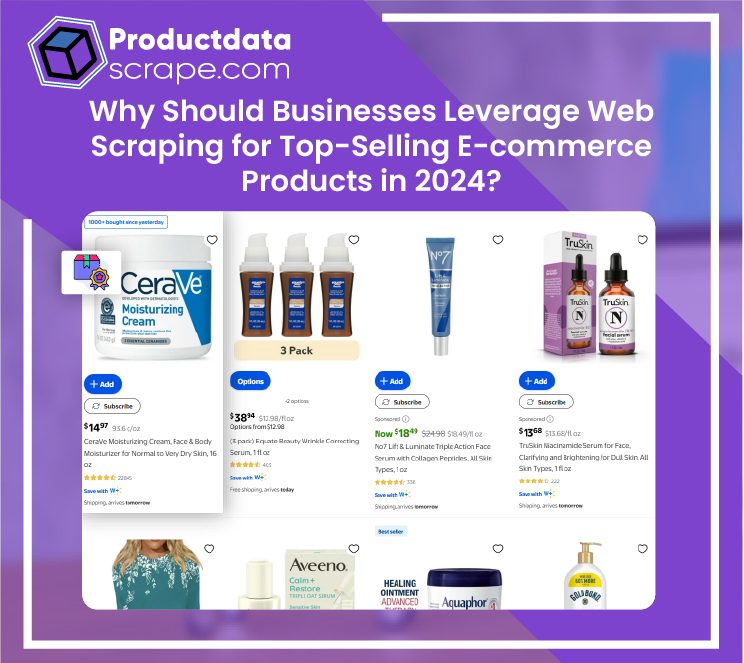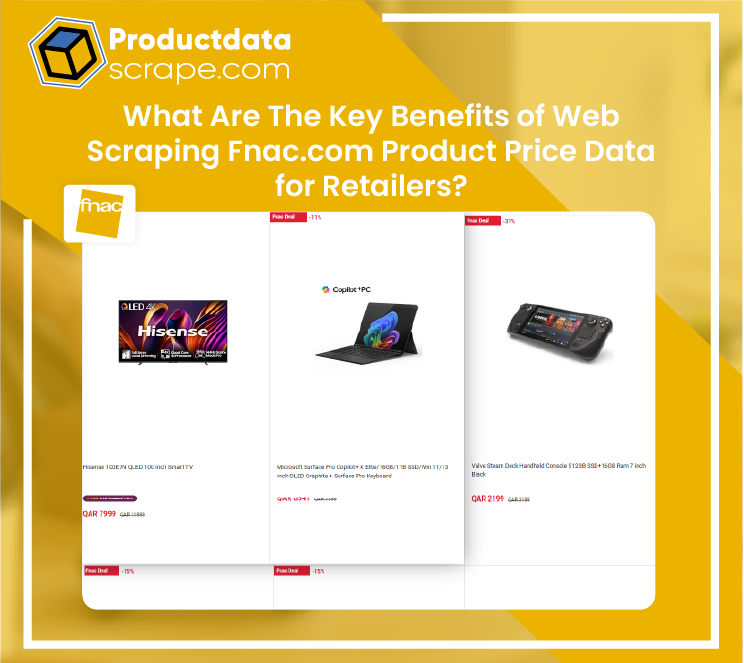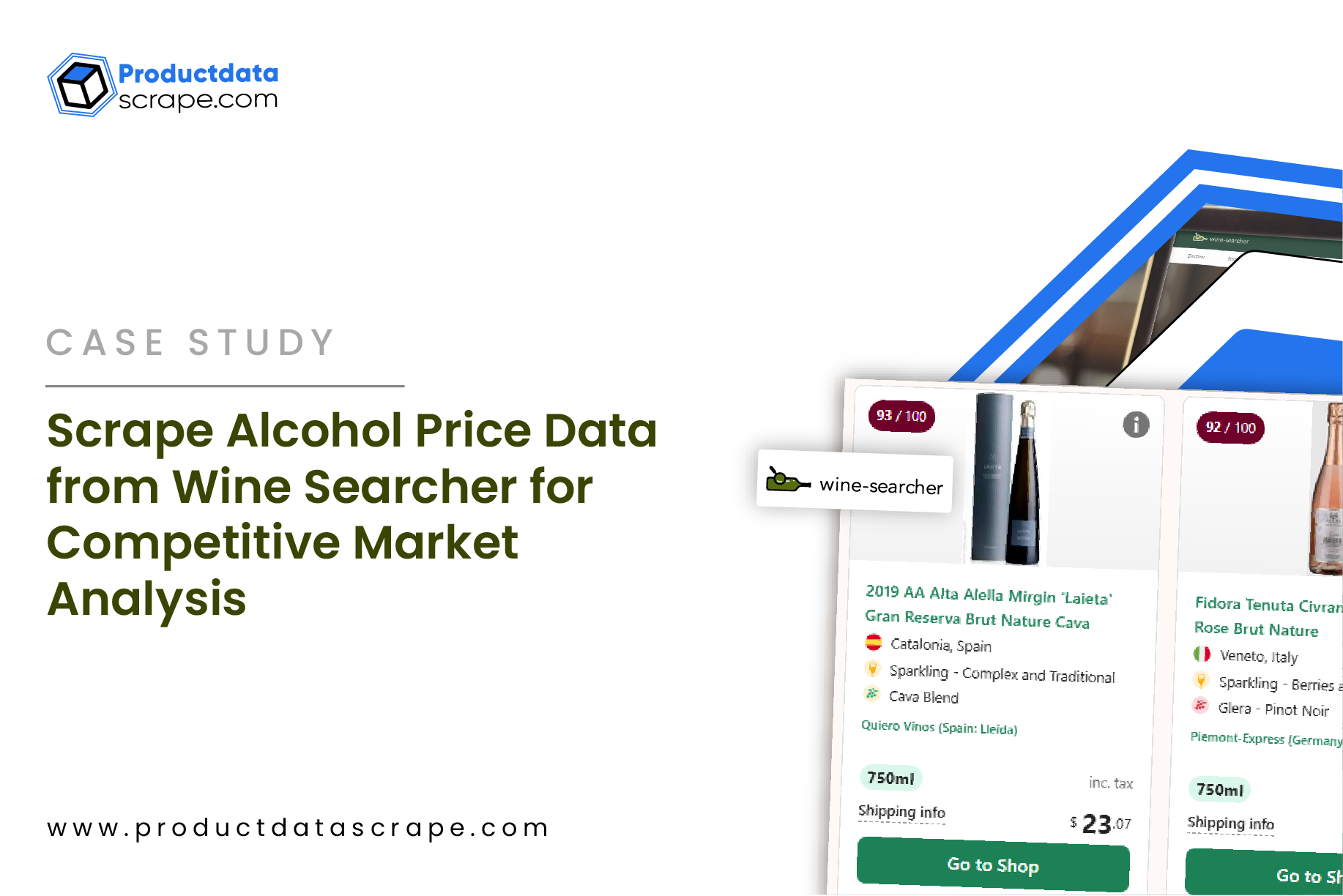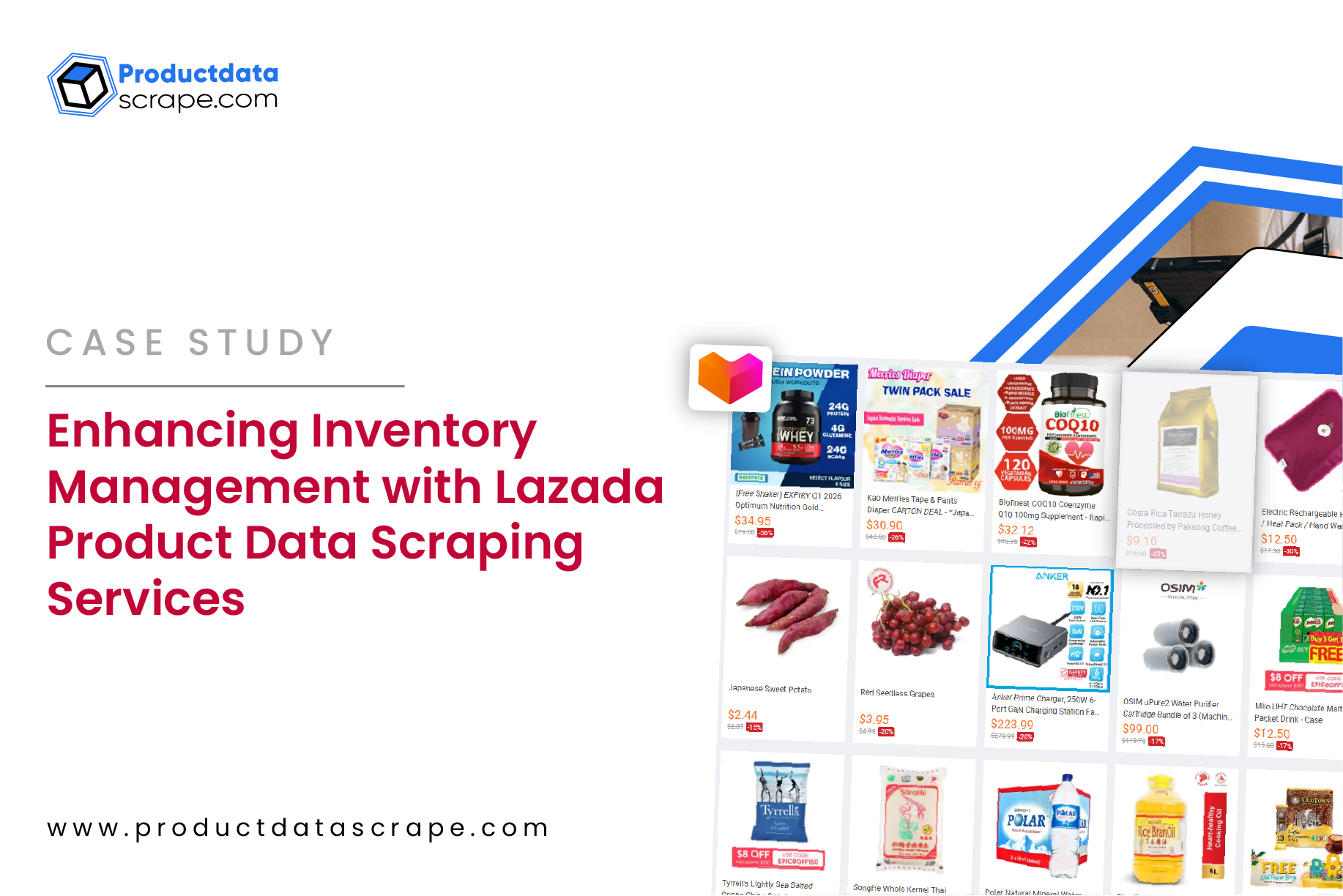
Online merchants or retail sellers use a pricing strategy to set up product prices considering revenue targets and production costs, like lifetime consumer value and average order value. You can't consider pricing strategy as a discount offering method, even though you can include a strategy to offer discounts in your complete product pricing methodology.
Based on your goals, it helps you define the pricing range that will attract more clients, generate more profit and sales and retain existing clients.
If you offer your products at too high prices, you are taking the potential risk of cart abandonment and a drop in sales, conversion, and adequate revenue. There are multiple methods to optimize product prices using pricing intelligence, but below are effectively helping retail and eCommerce businesses to optimize pricing strategies.
Defining Pricing Strategies to Increase Sales

Defining the product or service price customers will pay is the main aim of pricing strategies in eCommerce. By raising product costs with the profit margin, e-commerce businesses create pricing strategies and increase their sales. For example, if a toy costs 15 USD, the seller will include profit margins of 20 percent or 3 USD. That will make the final selling price of the toy 18 USD.
Scraping web data for eCommerce business is a straightforward process, and many factors play their role in defining product price.
- Cost of import duties, warehouses, and product delivery.
- Product supply and demand
- Taxes
- Business expenses
- Market price
The above factors have a massive impact on product prices. Note that your pricing plan for eCommerce products will significantly influence the price that will sustain in the market. Hence you can charge more than what you expect in such situations.
Significance of Pricing Policies on eCommerce Products Prices

Using an eCommerce product pricing strategy, you can objectively choose prices. Further, you can choose your product price, ensuring profitability for your company.
Therefore, let's explore a few significant reasons behind developing the retail pricing plan that is mandatory for the company's success.
Comparison of Goods Prices

According to the research, over 70 percent of customers use digital platforms to check the prices of specific products from multiple retail sellers before buying them.
Why is it essential?
It is because you can't decide prices arbitrarily. You may lose the customer base if your product prices are too high. Further, your potential clients may not choose to buy your products. To avoid this, you should ensure a reasonable pricing strategy according to competitive market and industry standards.
The Implication of the Price
You are making a standard error if you don't provide a cost factor allowance while developing a pricing strategy for an eCommerce business.
How?
Handling the cost factor is the primary step in defining product pricing. For instance, your goods price is 15 USD. But your rival offers the same products for less than your offer price.
To maintain this, you need to match the competitor's prices. If you do so, you're cutting the cost of the product. Hence, consider the significance of cost factors during the product pricing strategy development.
Alleged Product Worth

Perceived product worth has an ultimate impact on the retail pricing strategy. Besides, customers will only pay for the product's worth.
If you see the pricing points of your customers as your cost concerns, you may switch off the specific product. If a customer is ready to pay you more than your product cost, you will please.
The Top 10 Pricing Strategies to Maximize Business Profits
1 - Cost-based Pricing

Many users try this method to decide their product pricing compared to their competitors. Typically newcomers in the e-commerce industry use this pricing method.
The pricing technique that depends on cost is relatively simple. Instead of concentrating on customer service, focusing on your retail business is essential. The brand defines the price based on the projected profits. It would help if you considered the willingness of potential customers to spend a specific amount to buy the product.
Using this method, you should determine the item's selling price by adding business expenses, item cost, expected profit, and other cost factors. Check the example below to understand the selling pricing better using the total cost factors.
Let's take an example of a toy that we took above. Consider that the toy may cost 2 USD overall before profit. If the brand management believes the toy deserves a 20 percent margin to generate profit after researching the market and competitors, the toy will have a retail price of 2.40 USD.
Now, let's explore the merits and demerits of a cost-based pricing strategy.
Merits:
- Locates the primary emphasis on controlling the item cost.
- A simple technique to calculate the price
- It is advantageous to have a vast product catalog.
Demerits:
- It would be best if you tracked cost control closely.
- Errors in the calculation will lead to a loss in revenue.
- A rise in product cost leads to price hikes.
2. Competitor Pricing

Copying competitors' product prices is the simplest pricing method in an eCommerce business. To determine the prices of your retail items, use the average prices of competing products. You may fail in this strategy if you decide on higher prices than your competitors. For instance, local grocery sellers may have more expenses in the major national chain of supermarkets.
But, it is simple to set up a retail pricing strategy using competitor prices, particularly while launching new products in a specific market.
Check the below example to understand better:
- A body spray will cost around 10 USD
- The retail company spends around 5 USD on product costs.
- The product package becomes 15 USD in total.
- And now, the brand has decided to sell the product at 20 USD on average.
- Now, the brand project the profit by deducting the amount they will spend in the operations from the selling price.
- That is 20 - 15 = 5 USD. It means each body spray will bring a profit of 5 USD for this retail seller.
Now, let's learn about the merits and demerits of competitor pricing strategy.
- Allows your company to reduce product costs to beat the competitors.
- Simple to use method.
- The best method for newcomers in the eCommerce industry
Demerits:
- You must perform deep market research before deciding on prices.
- It would help if you modified prices to reflect market changes.
- To avoid unexpected losses, you must manage costs carefully.
3. Value-based Pricing

Competitor Pricing and cost-dependent pricing are value-based pricing methods. At the same time, customer-based pricing is a slightly different pricing method.
Product-selling companies should offer value to their customers with company overhead, product cost, and the selling price.
This technique allows sellers to charge their customers a reasonable price on the products without compromising the money-making ability of the company. And this is the best thing about customer pricing tactics.
The company's Unique Selling Proposition is the value you offer to customers, and it is the first consideration of this strategy. Consider the factors differentiating your services or products existing in the market. It is the product packaging, customer service level, quantity, or quality you offer to regular consumers. You can also find more ways to offer value to earn customer loyalty in the long term.
Now, let's understand the calculations behind this product pricing method.
- Calculate the expenses and cost for the product you want to sell. For example, a water bottle costs 10 USD.
- We are observing competitor prices and sorting out the average selling price. Assume it costs 15 USD.
- You will make a profit of 5 USD.
- Suppose you offer value with this water bottle, with superior packaging with the same competitor price. You can increase the profit margin by 1 USD.
- You can use this method to increase profit margins if you're a brand.
- You can also grow sales by adding value to your high-end products.
- Using this strategy to decide product prices makes you different from competitors.
Demerits:
- Buyers' perspective on your product value influences these value-driven prices.
- Susceptible to rivals selling reasonable products.
- Brands should not compromise customer service or product quality.
4. Dynamic Pricing

As the name suggests, it is a flexible pricing technique. Companies can define variable prices using this method depending on market demand and supply.
Based on product availability, and market competition, an organization may lower or raise the product price. In this pricing strategy for new products, The new or market rivalry may result in price reduction to attract more buyers and make products reasonably priced.
Likewise, a company may increase the product price if there is a massive demand for that specific product in the market, fewer suppliers, or they are out of stock. Further, if a company buys an extra stock and feels that it may expire, damage, or become outdated, it can liquidate the stock b reducing the price.
A brand should understand the competitor's prices to execute this pricing method.
This method for retail product pricing works well for digital eCommerce platforms with resources and time to track their market demand, competitor prices, and suppliers with their market expertise.
- It works well with demanding products in the market and aids in competitive cost maintenance.
- Helps with increased revenue and profit with the rise in demand
Demerits:
- Potential misjudgment of the product's actual price
- Sales may go down if there is a drop in demand.
- Buyers may wait for the best time because of price variations.
5. Bundle Pricing

The bundle pricing method works well if you're operating in a highly competitive market. It also helps to boost retail sales and attract more buyers to the store.
Computing the product prices using this method is relatively simple. It needs to put the set of relevant products and list them for discounted selling.
The average order value of the business can increase with bundling products. It will help businesses to note the several products selling in a single transaction.
If you consider choosing any product, this tactic works effectively. For instance, a single pair of jeans costs 20 USD. A customer pays 30 USD for three products.
Let's explore the merits and demerits of the bundle pricing strategy for eCommerce products.
Merits:
- Motivates the customer upselling.
- It boosts overall income and sales with inventory reduction.
Demerits
- Customers may pay only a part of the decided price for one product.
- This may lead to fewer profits.
- Using the combination of irrelevant products may make buyers understand.
6. Loss-Leader Pricing

By drawing customer attention, they displayed low product costs, leaving them perplexed by how brands can earn revenue from selling products at lower prices. Significantly, they don't profit from the product selling as they hardly recover business costs.
Why are we discussing this strategy if it can't generate profit for the company? Well, let's recap deceiving buyers.
Executing the loss leader product pricing strategy will attract more buyers to visit your platform and explore additional items. Loss leader pricing strategy is the best for brands who sell add-on products that retain customers to buy refills and other supplementary products. Let's understand this concept using an example. Consider a company selling a wireless printer for 150 USD. Visitors will purchase it due to the lower price. But if he runs out of ink in the printer, he will again visit the same website from where he bought the printer and spend 70 USD to buy an ink refill. Here, refill compensates for the losses on printer price.
Merits:
- It aids in competitive cost maintenance and works well with demanding items.
- Boosts revenue generation from the rise in product demand.
Demerits:
- Sales may go down if there is a drop in demand.
- Potential misjudgment of the actual item cost.
- Due to price variation, buyers may wait to buy the product for the right time.
7. Price Skimming

You should have reviewed limited edition or exclusive offers on several eCommerce websites. Offering something unexpected leads to a rise in customer expectations. Further, it strongly encourages users to purchase products.
Many product manufacturers use special or limited editions to explain their expensive items. Consumers think there is limited stock and expect fear missing out on the product if they don't buy now.
Businesses use different strategies to create hype by reducing prices quickly. Like, retail sellers can offer a 25 percent discount for one day. Now, consumers can take advantage of this offer for one day.
Price skimmingis efficient if a customer wants to fill the shopping basket quickly.
Merits:
- In-season discount offers can exploit the demand for seasonal items.
- The latest technologies can use their utility and novelty to earn profit.
- Highly demanding products can help from the buzz.
Demerits:
- Buyers may wait for the price to drop to buy the product.
- Price skimming only helps in daily needs products with limited life.
- It is an effective method with a constant supply of new items.
8. Discount Pricing

It is a strong pricing strategy for sluggish sales reviving. Companies use this pricing strategy to increase sales and liquidate inventory.
Offering discounts in monetary amounts or percentages works effectively. However, it is significant to avoid offering excessive discounts. And ensure customers must trust they are getting reasonable value.
Merits:
- Discounts lead to boosting sales.
- Buyers believe they are getting fantastic value.
- Even a small profit can. Maximize revenue and sales.
Cons:
- There is a chance of a decline in profit.
- Offering discounts on best-selling items may lead to a drop in sales.
- Customers may avoid paying the total bill in case of too many discount offers.
9. Geographic Pricing

You must add delivery charges, tax, and customs duties to your purchase price and maintain the single price for selling in a few nations where your website is available to sell products.
Further, determining the selling price by market competition level, ordinances, and laws of the country will help.
You can use the Geographic pricing approach in many ways. It is possible to determine the selling price using other methods for international goods trading.
10. Odd Prices

Deciding reasonable eCommerce product prices with odd prices is a great way. The buyer regularly notes the digit of the price from the left side. For instance, a buyer chooses a 5.99 USD product instead of a 6 USD product despite a one-cent variation.
You will attract more buyers by using this strategy as you make them believe you are products at an affordable price.
Conclusion
These are the top 10 pricing strategies to increase sales in e-commerce businesses. Hopefully, you got the value out of them. Product Data Scrape offers price skimming, eCommerce data scraping for competitor analysis, competitor price monitoring, pricing intelligence, and other services. Contact us to learn more about these services and boost your business using data and pricing strategies.





















